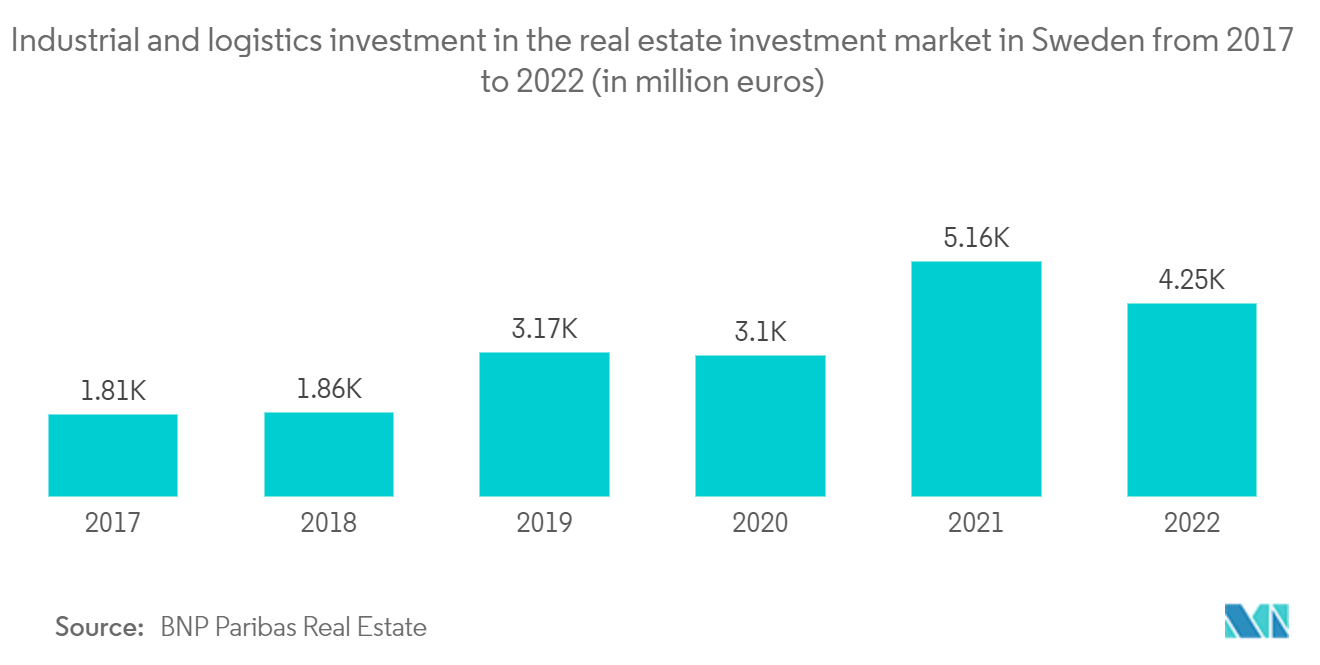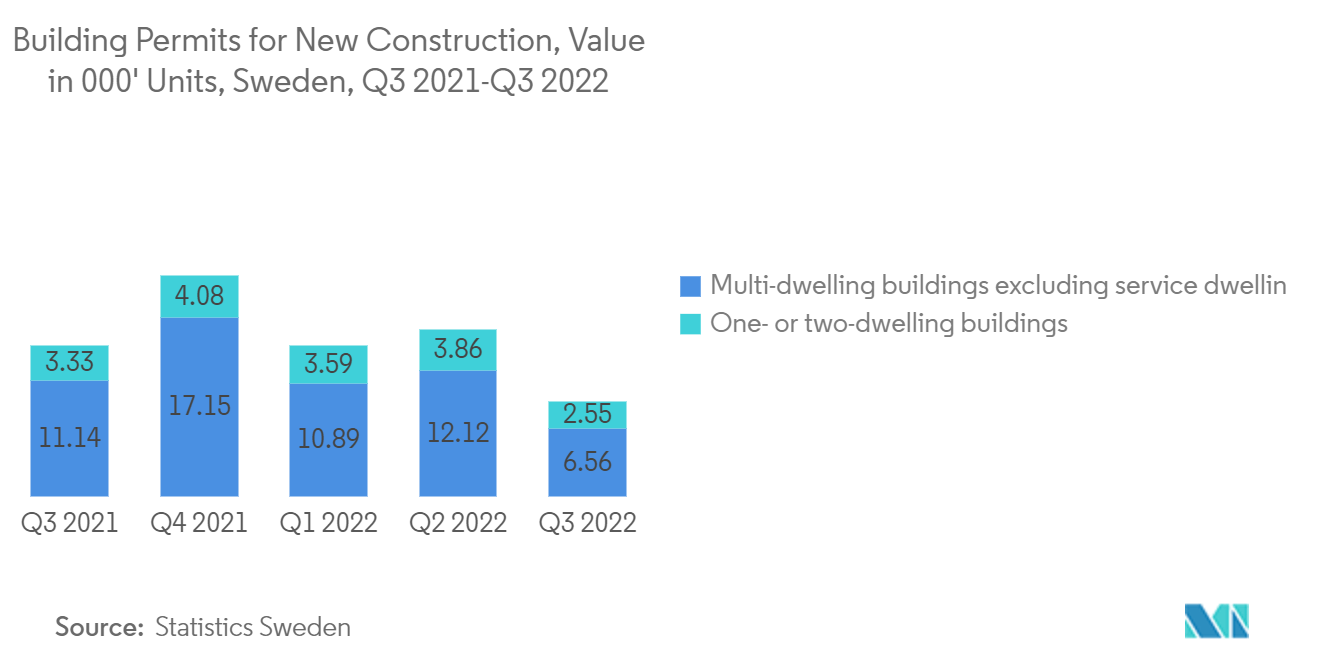Market Trends of Sweden Prefabricated Housing Industry
The Demand for Prefabricated Houses is Increasing in Sweden
- In 2021, Sweden was widely regarded as the leading country of offsite manufacturing, leading the world in terms of the sheer number of penalized single-dwelling residences, which represent over 80% of the country's overall housing market. Sweden has the world's highest percentage of factory-built wooden houses, mainly using closed wall panels. The trend is set to continue, with contemporary market stressors providing grist to the prefab mill.
- Sweden is undergoing a major building boom. With skills shortages in traditional construction trades placing further pressure on the sector, prefab houses are in high demand. Among the myriad influences that have led to Sweden's dominance of the offsite space in terms of skills, expertise, and industry structure, the most frequently cited factors are the country's abundance of slow-growing, premium-quality timber and its uniquely challenging climatic conditions.
- The increasing adoption of technology by prefabricated house developers is gaining traction among users. In 2022, energy-efficient housing solutions attracted Sweden's residential housing sector. In addition, manufacturers provided a two-story prefabricated residential building with an area of 150 square meters with solar panels. These modules are completely capable of providing themselves with electricity from solar panels. Meanwhile, the country has imported more than USD 360 million in prefabricated buildings to meet the increasing demand for modular housing units. Estonia, Latvia, China, Lithuania, etc., are some of the major exporters to the country.

Rise in Construction Activities
- Compared to many other countries, the Swedish government adopted a relaxed attitude in responding to COVID-19 and opposed a strict lockdown. Public health authorities recommended people to self-isolate and take preventive measures, but the results of this strategy were costly in terms of health.
- The performance of the Swedish construction industry is better than its European counterparts, largely due to the country's less stringent lockdown measures. Although the impact of COVID-19 was relatively limited, the outlook for the Swedish construction industry remains negative. Before the current crisis, the industry was already weak due to the economic downturn. After the pandemic, the government is preparing to rapidly advance its infrastructure spending plans. Although downside risks remain, especially if the outbreak worsens, Sweden's construction industry may perform better than most European neighbors.
- Meanwhile, the Swedish people are choosing wooden prefabricated housing over conventional houses, as they are time and cost-consuming. In addition, wooden structures, tar-coated timber houses, low-cost solar-powered houses, etc., are gaining traction among the public. In Q3 2022, building permits for various types of residential dwellings were significantly reduced. For instance, in Q3 2022, building permits for the construction of multi-dwelling buildings, excluding service dwellings, amounted to more than 6,560, which declined by nearly 40% compared to the same period in 2021.


